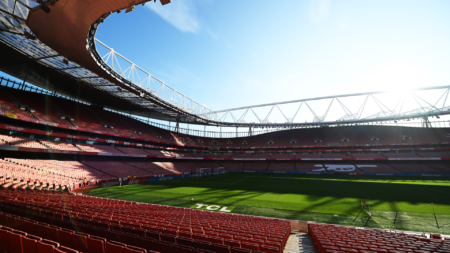Barcelona’s Extended Absence from the Nou Camp
Barcelona’s return to the Nou Camp has been postponed yet again, with the club now set to remain away from their iconic home until 2026. Initially planned to be completed in time for the club’s 125th anniversary in November 2024, the ambitious renovation project has faced numerous delays. The latest update, reported by Spanish sports news site Relevo, indicates that the earliest return is now scheduled for October 2025, with the stadium’s roof installation scheduled for the summer of 2026. These delays have caused significant disruption for the club, which has been playing at the Estadi Olimpic Lluis Companys, a stadium with a mere 54,367 capacity, since May 2023.
The Grand Vision for the Nou Camp
The renovation project, which has seen the stadium gutted to its concrete skeleton, aims to expand the Nou Camp’s capacity to 105,000, up from its current 99,354. With an investment of £1.25 billion, Barcelona is set to create the largest stadium in Europe, surpassing London’s Wembley Stadium (90,652 capacity) and Twickenham Stadium (80,200 capacity). The ambitious project includes the installation of a new roof, state-of-the-art facilities, and a modern design that will greatly enhance the fan experience. However, the club’s original goal to create the third-largest stadium in the world, with a capacity of 112,500, has been scaled back due to various constraints.
The Impact on Barcelona
The absence from the Nou Camp has had a significant financial impact on Barcelona. Playing at the smaller Estadi Olimpic Lluis Companys has resulted in a substantial reduction in matchday revenue. This financial strain has compounded the club’s already challenging financial situation, which has been a topic of concern for fans and stakeholders alike. Despite these challenges, the club remains committed to the renovation project, viewing it as a long-term investment that will solidify their position as one of the world’s premier football clubs.
The Emotional Connection to the Nou Camp
The Nou Camp, which opened in 1957, has been the heart and soul of Barcelona for over six decades. The stadium has hosted countless memorable moments in the club’s history, from European Cup victories to La Liga titles. The renovation, while necessary, has drawn mixed reactions from fans. Some view it as a necessary step to modernize and enhance the club’s facilities, while others are nostalgic for the iconic stadium as it stands today. The gutting of the stadium, which has left it unrecognizable, has been particularly difficult for long-time supporters who have countless memories tied to the venue.
The Broader European Stadium Landscape
The renovation of the Nou Camp is part of a larger trend among top European clubs to modernize and expand their stadiums. Real Madrid recently completed a £1.5 billion renovation of the Bernabeu, which now has a capacity of 81,000. They are already planning further expansions to host the 2030 World Cup Final. Barcelona’s project, while ambitious, is a testament to the club’s commitment to maintaining their competitive edge. The completion of the Nou Camp will not only enhance the club’s financial prospects but also solidify its status as a leading football institution.
Looking Ahead to 2026
Despite the delays, the anticipation for Barcelona’s return to the Nou Camp remains high. The club’s website had previously claimed that the return to the stadium was “imminent” in October 2024, but the reality has been more complex. The next few years will be crucial as the club continues to balance the financial and emotional aspects of the renovation. Once completed, the Nou Camp will stand as a symbol of Barcelona’s resilience and ambition, ready to welcome fans back to one of the world’s most iconic sports venues.











